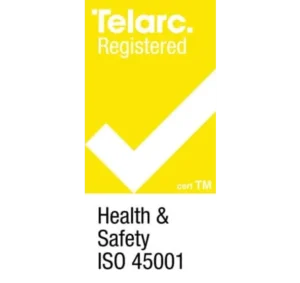Recycling at Solo
Restore, Reuse, Repurpose
Our commitment
Solo’s Kaitiakitanga for our Planet is to focus on two values – Responsible Consumption and Production and on Climate Action. Within these values we have developed strategies on meeting our Circular Economy and our Waste Reduction Goals.

Our Commitment to a Circular Economy
A Circular Economy aims to keep the resources in use for as long as possible. Rather than follow a linear one, where a product reaches an end-of-life state and its material is then lost, a Circular one seeks to recover and regenerate those materials into something new. The positive benefits to society, business and the environment are obvious. By designing out waste and pollution we are instead regenerating natural systems.
The Easiest Plastics to Re-Cycle
At Solo, we deal primarily with high-density polyethylene (HDPE). This carries a Type 2 plastic code and is one of the safest forms of plastic, solvent resistant and has high strength characteristics. It’s the perfect material for pipes and one of the easiest plastics to re-cycle.
To meet our strategies Solo commits to taking clean HDPE waste from any source, chipping it and extruding it into pellets for re-use into new products suitable for non-virgin material. We will invest in a recycling plant, staff and associated equipment to make this happen. We also commit to recycling 100% of all HDPE waste produced internally at Solo and will publish our results on our website.
210
TONNES OF PE WASTE WE HAVE
RECYCLED SINCE JANUARY 2020
Plastic Piping
The Global Shift Towards Polyethylene (PE) From Traditional Materials
Since the 1700’s when wooden pipes were first used, pipes have advanced through the ages using materials like Cast Iron, Clay, Concrete, Steel, Fibreglass, PVC and PE. Most of today’s Water and Wastewater buried pipes in New Zealand are in PE, PVC or Concrete, with the larger diameters historically tending towards Concrete.
Over the last decade, demand for plastic pipes as a preferred material has risen globally to meet the needs of growing populations with their ability to handle extreme weather events. Large diameter PE pipes are being increasingly used for sewer and surface water management with the latest technology allowing them to be used in water transfer and pressurised applications. Their growing popularity is due to a number of factors:

Sustainability
PE is a 100% re-useable material and one of the easiest plastics to be recycled into new products, meeting todays circular economy directives and increasing demand from governments to consider our environmental impact.

Adaptability
PE has the ability to be easily modified on site. Cutting and jointing can be carried out in final positions using butt, electro-fusion or manual welding processes with the results being instant. No curing time is required, providing watertight seals.

Chemical Resistance
PE’s stable nature gives it a very good compatibility rating with most chemicals and is resistant to strong acids and bases as well as gentle oxidants and reducing agents.

Earthquake Resilience
Research has shown that PE has the best tolerance and lowest failure rate of all pipe materials to shakes from ground movement1. This is of particular important to New Zealand, where typically over 15,000 earthquakes are recorded every year and locals councils have to budget for failure rates.

Hydraulics
PE smooth internal walls provide superb hydraulic performance with a Manning’s Coefficient value of 0.009 (concrete 0.013) and a Ks value 0.03mm (concrete 0.15mm). This flow characteristic and low abrasion resistance supports less fixed biomass growth compared to other pipe materials2,3.

Lifespan
PE is an incredibly stable material and has a working lifespan in excess of 100 years. Linked with its recycling ability, when the materials reaches its end of life it can be chipped, re-extruded into pellets then used to create new pipes or new products which will last another 100 years.

Carbon Footprint
Recent studies have drawn comparisons of the emissions created to produce large diameter concrete and PE pipes. It was found that on average, concrete produced 21% more green house gas emissions during the production process and 95% more emissions when transported from the production facility to site. PE pipes therefore have the potential to aid the construction industry meet their reduction in green house gas emission targets.4

Install Times
Typical installation times for PE pipes is approximately 30% faster than that of traditional concrete5. This time saving increases as the diameter increases, where the weight of concrete prohibits the length of each section that can be manufactured. Typically PE is supplied in 6m or pre-welded 12m sections as opposed to concrete’s 2.4m, meaning less jointing is required. Reduced install times also reduces Health and Safety risks – less staff are required for less time in trenches or confined space environments.

Flexibility
PE has a degree of flexibility, and will deflect when subjected to external loads from traffic or soil settlement, carrying less crown loading. Other more rigid materials have to fully carry this external load through their pipe walls into the bedding material. A flexible pipe is less stiff than the surrounding soil, so when buried, the column of soil over the flexible pipe settles more than the columns of soil to the sides. The effect of this is that the flexible pipe will deflect on loading, but will also tend to shed load away from itself.

Weight
PE pipes are significantly lighter than concrete resulting in easier transfer, loading and unloading costs. Smaller cranes mean project savings.
In summary, the consistent high performance, low environmental impact, flexibility and flow advantages make PE the ideal material for many piping, chamber and tank applications. They are increasingly being specified at larger diameters by water authorities and councils and provide a long lasting, effective solution to the challenges of modern living in all types of environments.
References:
- Rubeiz, Camille. (2009). Performance of Water and Gas Pipes in Past Earthquakes and Hurricanes. 1-9. 10.1061/41050(357)48.
- Effect of pipe material on biofilm accumulation in a drinking water distribution system. Adapted from Niquette et al. (2000). Water Res. 34: 1952–1956.
- Tsvetanova, Zvezdimira. (1970). Study of biofilm formation on different pipe materials in a model of drinking water distribution system and its impact on microbiological water quality. 10.1007/978-1-4020-5098-5_46.
- Cowle, Matt & Samaras, Vasilios & Rauen, William. (2013). A comparative analysis of the carbon footprint of large diameter concrete and hdpe pipes.
- Study of installation of 90m of sewer pipe of concrete vs plastic: https://www.youtube.com/watch?v=ozPkwIcjFf8
Accreditations








